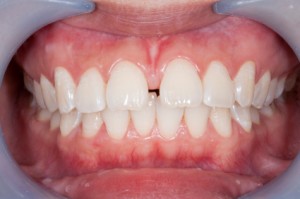According to the Centers for Disease Control and Prevention, nearly 50 percent of Americans suffer from periodontal (gum) disease, the leading cause of tooth loss. Gum disease is an inflammatory condition caused by bacterial growth in the mouth. If left untreated, the oral bacteria can spread through the body and cause potentially deadly health conditions. In this blog post, we take a look at six serious health conditions linked to gum disease.
Continue reading “Six Serious Health Conditions Linked to Gum Disease” → Posted on by Dr. Robert Milner





